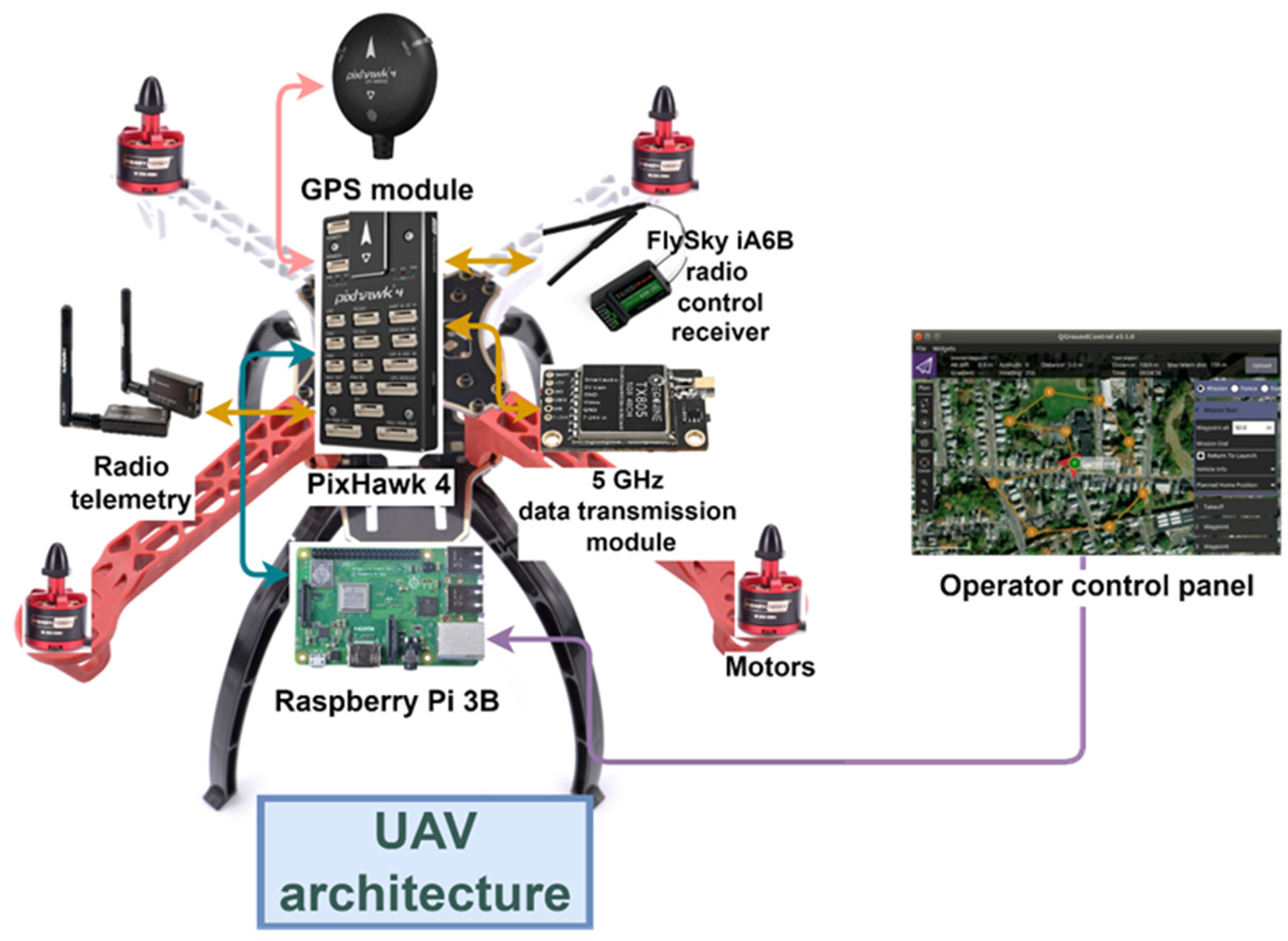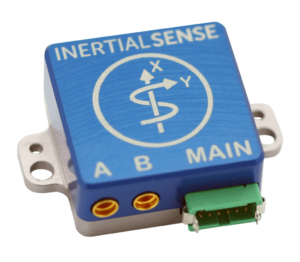SparkNavi Drone Flight Controller and GNSS/INS Made in Taiwan: Innovation for Specialist UAVs
SparkNavi Drone Flight Controller and GNSS/INS Made in Taiwan: Innovation for Specialist UAVs
Blog Article
The Significance of Drone Trip Controllers in Modern Aerial Modern Technology: Secret Parts and Their Impact
In the world of contemporary aerial modern technology, drone flight controllers serve as the essential systems that orchestrate a drone's performance and capacities. These sophisticated units incorporate important parts such as microcontrollers and GPS components, promoting stability and precision in trip operations. Their duty is especially pronounced in independent features, where sophisticated algorithms boost navigation and challenge avoidance. As markets increasingly count on drones for applications ranging from agriculture to monitoring, the progressing technology within trip controllers elevates essential concerns regarding their future effect and possible improvements. What technologies lie ahead that could redefine our understanding of drone abilities?

Summary of Drone Trip Controllers
In the realm of aerial technology, drone trip controllers function as the critical brain of unmanned aerial lorries (UAVs), enabling accurate maneuverability and security throughout trip. These sophisticated systems incorporate sensing unit data, processing formulas, and control inputs, allowing drones to perform complicated trip patterns with precision.
Drone trip controllers make use of numerous sensors, such as gyroscopes, accelerometers, and GPS components, to examine the UAV's positioning and placement in real-time. This details is vital for maintaining equilibrium and making certain safe procedure in varied ecological conditions. The controllers procedure this data to make immediate changes to the drone's electric motors, allowing for smooth shifts and receptive handling.
Additionally, flight controllers are furnished with innovative software application that supports functions such as waypoint navigation, barrier avoidance, and self-governing trip abilities. This software application is important for both recreational and commercial applications, where reliability and precision are extremely important. As drone technology remains to advance, the evolution of trip controllers will certainly play an essential duty in improving UAV performance, adaptability, and safety, eventually increasing their applications across different sectors.
Secret Parts Explained
Understanding the basic components of drone trip controllers is vital for comprehending exactly how these systems run efficiently. At the heart of a trip controller is the microcontroller, which works as the brain, refining data from different sensors and performing commands. Important sensing units consist of accelerometers and gyroscopes, which gauge the drone's orientation and activity, providing critical responses for stabilization.
An additional trick component is the measure, which assesses altitude by determining climatic pressure, while general practitioner modules offer positional information, allowing self-governing navigation - SparkNavi drone flight controller and GNSS/INS made in taiwan. The trip controller additionally interfaces with Digital Rate Controllers (ESCs), which control the rate of the drone's motors based upon the controller's commands
Interaction modules, such as radio receivers, facilitate remote control input, enabling drivers to send commands in real-time. Additionally, some trip controllers integrate software application that can deal with complex algorithms for waypoint navigation, trip preparation, and telemetry information evaluation.
Role in Flight Security
Central to preserving flight security, drone trip controllers utilize sophisticated algorithms to refine sensor information and make real-time modifications. These controllers are furnished with a range of sensing units, including gyroscopes, barometers, and accelerometers, which continuously monitor the drone's altitude, alignment, and speed. By interpreting this information, the trip controller can identify discrepancies from the wanted trip path and react quickly to preserve security.
For example, if a drone experiences an unforeseen gust of wind, the flight controller can promptly change the electric motor rates to counteract the disturbance, guaranteeing a constant flight trajectory. This capability is vital not just for hand-operated flight operations however likewise for implementing complicated maneuvers and keeping smooth trip in different environmental conditions.
.jpg)
Additionally, the advanced formulas made use of in flight controllers, such as PID (Proportional-Integral-Derivative) control, enable fine-tuning of the drone's reaction to modifications in flight conditions. By enhancing these control specifications, flight controllers can enhance stability, improve responsiveness, and decrease pilot work. Ultimately, the duty of flight controllers in making certain trip stability is important for the reliable and risk-free operation of modern-day drones across varied applications.
Impact on Autonomous Operations

Autonomous procedures are particularly vital in diverse applications such as shipment, monitoring, and agriculture services. you can look here With improved trip controllers, drones can autonomously navigate fixed courses, effectively collect data, and adapt to dynamic environments. This ability reduces the demand for continuous human oversight, thereby increasing operational efficiency and security.
Moreover, the execution of maker knowing strategies within trip controllers allows drones to enhance their efficiency with time by discovering from previous goals. This versatility paves the method for a lot more sophisticated independent applications, such as swarm modern technology, where several drones collaborate their actions to achieve a common goal.
Future Trends in Trip Controllers
Innovations in trip controller innovation are poised to reinvent drone abilities in the coming years. One considerable trend is the combination of fabricated intelligence (AI) and machine learning formulas, allowing drones to learn from their atmospheres and make real-time decisions. This innovation will certainly improve autonomous navigating, challenge evasion, and goal preparation, substantially boosting operational effectiveness and safety.
Moreover, the growth of sophisticated sensing unit modern technologies, such as LiDAR and multispectral imaging, will certainly give flight controllers with richer information inputs. This will certainly help with extra advanced logical capabilities, enabling drones to perform complicated tasks, such as accuracy search, agriculture and rescue, and facilities assessments with unprecedented precision.
Another arising fad is the miniaturization of flight controller components, which will certainly lead to lighter and extra portable drones. This advancement will extend trip durations and haul capacities, making drones more flexible for various applications.
Verdict
To conclude, drone flight controllers serve as vital elements in contemporary aerial innovation, making certain security and precision in maneuverability with the combination of microcontrollers, accelerometers, and GPS modules. SparkNavi drone flight controller and GNSS/INS made in taiwan. Their capacity to enable independent procedures and adjust to various applications underscores their relevance across multiple markets. As advancements in expert system and sensor modern technology proceed to emerge, the possibility for boosted abilities and boosted functional performance in drone systems will likely reshape the future of aerial Click Here applications
Central to maintaining flight security, drone flight controllers make use of sophisticated algorithms to refine sensor data and make real-time modifications. By analyzing this information, the trip controller can determine inconsistencies from the desired flight course and react without delay to preserve security.
Furthermore, the advanced go to my site formulas used in flight controllers, such as PID (Proportional-Integral-Derivative) control, enable for fine-tuning of the drone's response to modifications in trip problems. Inevitably, the function of trip controllers in guaranteeing flight security is essential for the reliable and risk-free procedure of modern-day drones throughout diverse applications.
The advancements in drone trip controllers not just improve flight security however also considerably influence independent procedures. SparkNavi drone flight controller and GNSS/INS made in taiwan.
Report this page